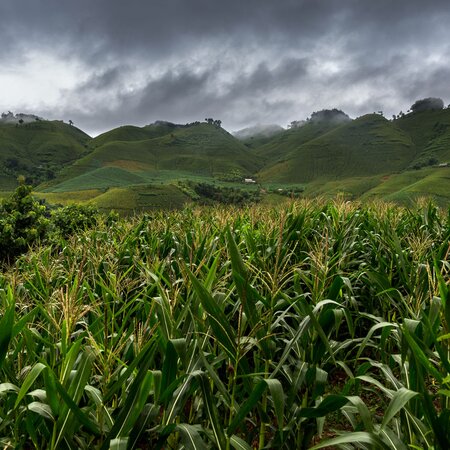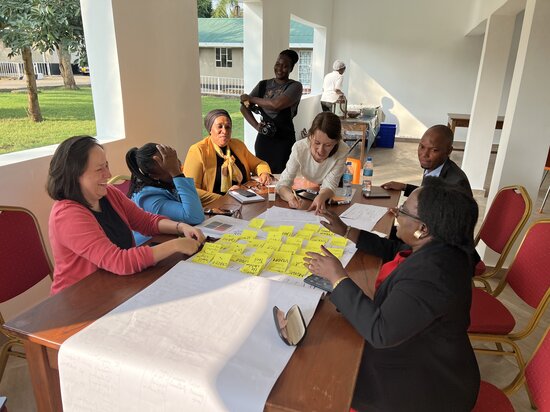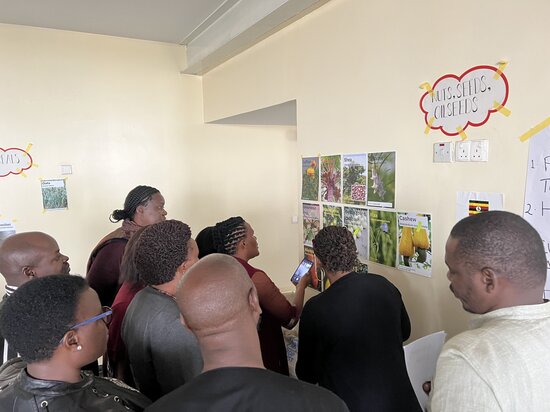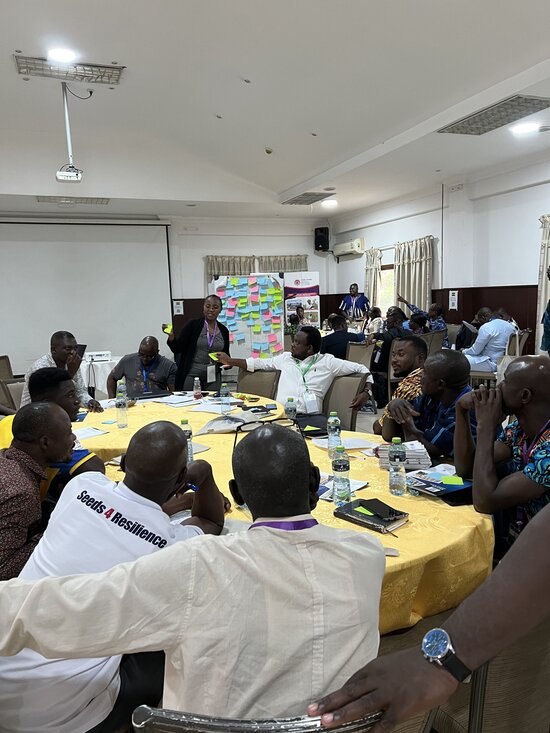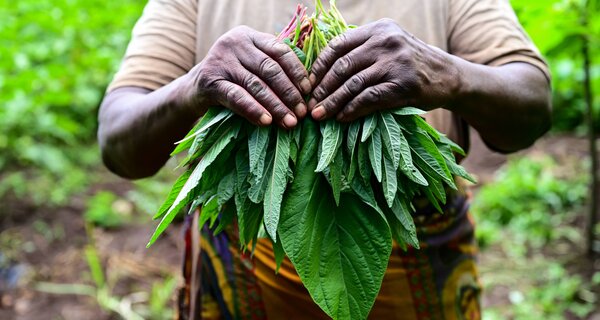From 100 to Four: Favorites in Focus for BOLDER Opportunity Crops

14 April 2025
BOLDER Project Stakeholders Meet to Identify 15 Underutilized Species for Conservation and Use
Over 250 farmers, genebank experts, government representatives, and private-sector partners gathered in Benin, Ghana, Tanzania and Uganda to undertake a seemingly impossible task: pick the best four opportunity crops for each of their countries.
Opportunity crops are underused local plants that offer new or alternative income and nutrition sources, particularly in response to shifting climate conditions or seasonal windows that are not fully exploited by more mainstream crops. And the local stakeholders met to decide which ones would be prioritized in the Crop Trust’s BOLDER initiative.
Why is the task so difficult? First of all, there are so many opportunity crops, and their promise is very specific to different places and contexts. Plus, each crop’s potential to adapt to climate change needs to be considered, along with its nutritional value, cultural acceptance, local market potential – and the farming community’s preferences. That’s a lot to take into account for crops that have been under-researched and for which there is therefore relatively little information available.
How did it go? Pretty well. Like a stock market trading floor, energy was buzzing in each room, as stakeholders crowded around pictures of more than 100 plant species to rate the opportunities that they could provide.
Passionate farmers argued their preferences with local chefs, scientists and policymakers. Someone shouted “Bambara groundnut!” at the top of their lungs. Others waved them off – until someone else nodded in agreement. Everyone had their say. It seemed like an auction for everyone’s favorite crop.
15 Opportunity Crops
At the end of each intensive two-day workshop, the groups came to a consensus. And after such workshops in four countries, BOLDER had 15 opportunity crops to focus on.
BOLDER is part of the Crop Trust’s BOLD project. The Building Opportunities for Lesser-known Diversity in Edible Resources (BOLDER) initiative launched in 2023 and works with partners in Benin, Ghana, Tanzania and Uganda to enhance the conservation, production and consumption of crops that open opportunities for communities.
These include millets, grasspea, Bambara groundnut and an array of traditional African leafy vegetables. They may not be a big deal in global markets, but they are vital for the farmers who grow them. This made the decision to choose four to five per country from more than 100 different possibilities so difficult.
Meet the Crops
Stakeholders in Tanzania prioritized finger millet, Bambara groundnut, moringa, sweetpotato and jute mallow. In Uganda, they selected jackfruit, pearl millet, pumpkin, cowpea and amaranth. Benin's workshop participants identified fonio, jute mallow, sweet berry and Bambara groundnut, while in Ghana, the focus was on turkey berry, baobab, sesame and amaranth.
Notably, amaranth was prioritized in both Uganda and Ghana, while another local vegetable, jute mallow, appeared in both Tanzania and Benin – chosen for cultural significance, drought tolerance and nutritional benefits.
Tanzania | Uganda | Benin | Ghana |
Finger millet Eleusine coracana (L.) Gaertn. | Jackfruit tree Artocarpus heterophyllus Lam. | Bambara groundnut Vigna subterranea (L.) Verdc. | Turkey berry Solanum torvum Sw. |
Bambara groundnut Vigna subterranea (L.) Verdc. | Pearl millet Cenchrus americanus (L.) Morrone | Fonio Digitaria exilis (Kippist) Stapf | Baobab Adansonia digitata L. |
Moringa Moringa oleifera Lam. | Pumpkin Cucurbita spp. | Jute mallow Corchorus olitorius L. | Sesame Sesamum indicum L. |
Sweetpotato Ipomoea batatas (L.) Lam. | Cowpea Vigna unguiculata (L.) Walp. | Sweet berry Synsepalum dulcificum (Schumach.) Daniell | Amaranth Amaranthus spp. |
Jute mallow Corchorus olitorius L. | Amaranth Amaranthus spp. |
|
|
The Alliance of Bioversity International and CIAT helped organize the meetings in Tanzania and Uganda, while the International Institute of Tropical Agriculture (IITA) played a key role in assembling participants for the events in Benin and Ghana.
Workshop participants used a scale from one to three to rate if a crop was highly responsive to the prioritization criteria (one), neutral (two) or not responsive (three).
All scores from all stakeholder groups were then compiled. This led to a score for each crop. The four crops with the highest scores became the BOLDER crops prioritized for each country.
One of the BOLDER initiative partners highlighted the importance of the process: “Preserving neglected crops strengthens food security and empowers communities with resilient, nutritious options for the future,” said Kauê de Sousa, a scientist at the Alliance of Bioversity International and CIAT.
Capacity Building
As part of BOLDER’s plan to develop the capacity of African researchers, practitioners and food-system actors to enhance the use and value of neglected and underutilized crops, the Norwegian University of Life Sciences – in partnership with Makerere University in Uganda and the University of Abomey-Calavi in Benin – has announced scholarships for eight PhD positions. Starting in 2025, the successful candidates will conduct socioeconomic and agronomic research on opportunity crops in East and West Africa.
In 2024, the Opportunity Crops Knowledge Base for the sustainable conservation, production and use of neglected and underutilized crop species in Africa was also launched. It offers information on these remarkable plant species and their valuable roles in resilient food systems worldwide.
“The project’s stakeholders have taken another important step toward addressing global food insecurity,” says Nora Castañeda-Álvarez, who coordinates the BOLDER Project. “The lessons learned in these four African countries can be applied in other regions of the world to overcome the growing threat of hunger.”
BOLDER is a component of the Biodiversity for Opportunities, Livelihoods and Development (BOLD) Project, a 10-year initiative that helps strengthen food and nutrition security worldwide by supporting the conservation and use of crop diversity.
Funded by the Government of Norway, the 10-year BOLD initiative is led by the Crop Trust in close partnership with the Norwegian University of Life Sciences (NMBU), the Nordic Genetic Resource Center (NordGen) and the International Treaty on Plant Genetic Resources for Food and Agriculture.
Categories: For The Press, For Partners, For Policymakers, BOLD

